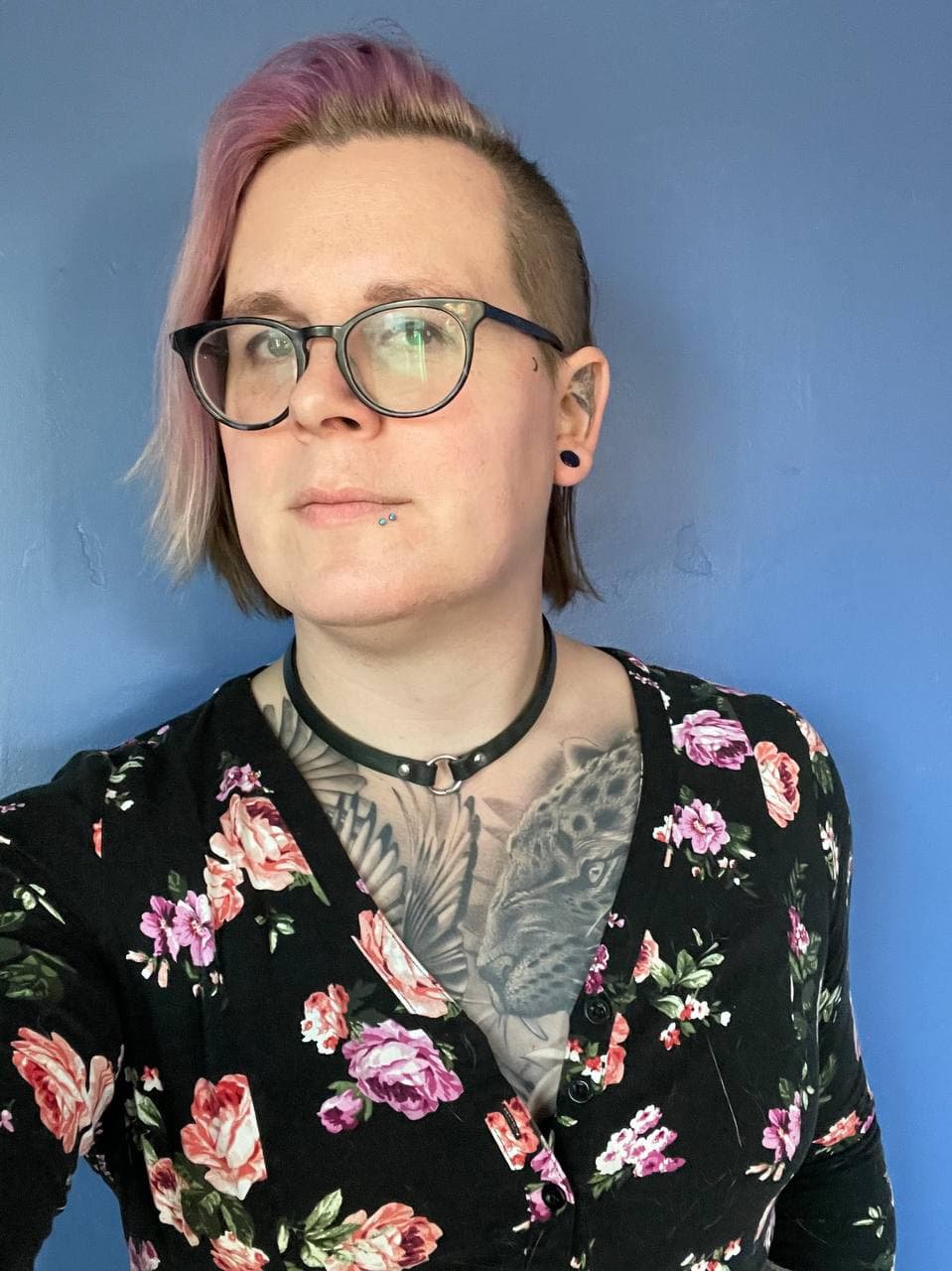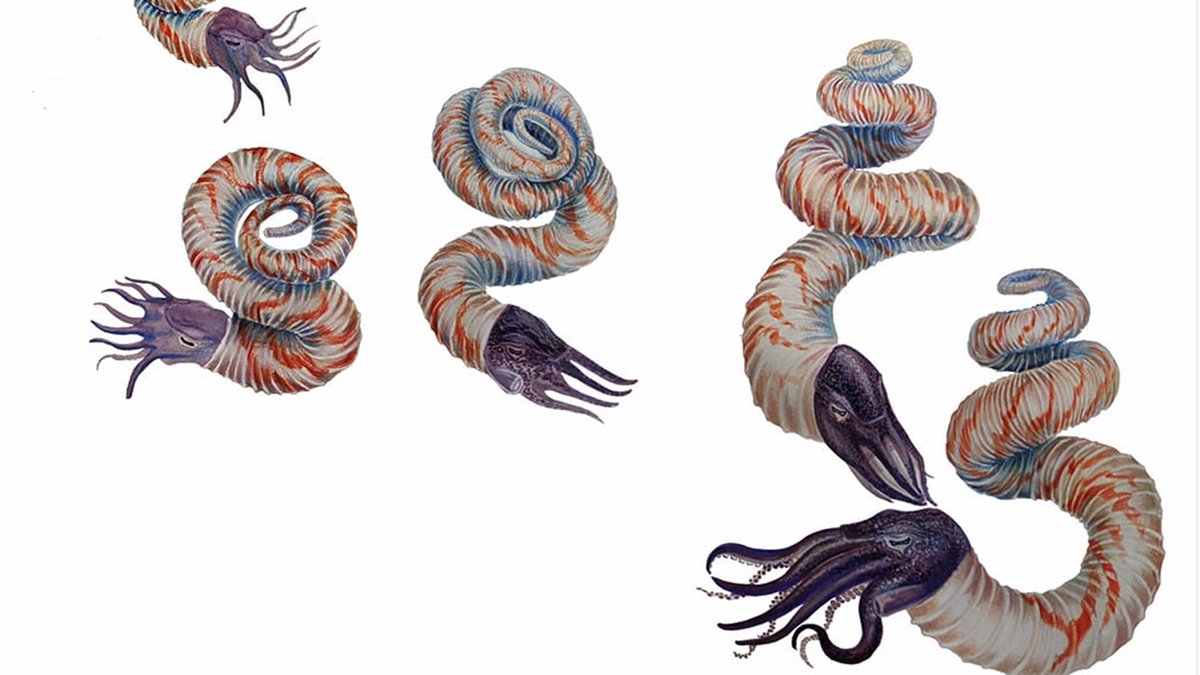More Pride and More Paleontology: LGBTQ+ Scientists Part Two
Welcome back, science lovers. If you missed the first in our two-part series highlighting some LGBTQ+ professionals within the field of paleontology for Pride Month, please give that one a read. We talked about the diversity in not only the scientists working in the field, but also the discipline itself.
For this post, we’re moving into the present to get to know professionals who are still digging into the past (see what we did there?!) to better understand what life was like here on Earth long before humans were reading blogs on their smartphones. There’s no doubt that what they’re uncovering now will be what inspires and informs generations of future paleontologists!

Riley Black
Riley Black
Riley Black turned her childhood interest in fossils into a career. As a prolific science writer, Black has been published in major outlets such as WIRED, National Geographic, Scientific American, and Nature to name a few. Black has written about everything from how dinosaurs raised their young, to her more recent Smithsonian piece on how certain dinosaurs evolved to fly on at least three different occasions.
Black is one of the major queer voices in paleontology, and has been open about her experiences belonging to an underrepresented group in the field for many years. She moved to Salt Lake City, Utah to be in a prime location for dinosaur excavations, but volunteers with different museums and universities to go to excavation sites across North America. Her extensive experience landed her a role as the resident paleontologist for the 2015 movie Jurassic World.
Through her career, Black has written several books. Written in Stone and My Beloved Brontosaurus deal with the fossil record and dinosaurs, while Skeleton Key; The Secret Life of Bone details where our own skeletons came from and what they do to keep us standing. Black’s next book, The Last Days of the Dinosaurs: An Asteroid, Extinction, and the Beginning of Our World, is due in April 2022.
We reached out to Black, who gave us some special insight into the infamous T. rex.
“Tyrannosaurs have a fearsome reputation. The last of their family, Tyrannosaurus rex itself, was arguably the largest carnivorous dinosaur ever to walk the Earth. But it took a long time to get to that point! Around 150 million years ago, more than 80 million years before T. rex, tyrannosaurs were pipsqueaks that lived in the shadow of predators like Allosaurus. One of the species found out where I do fieldwork in eastern Utah is called Stokesosaurus and was roughly turkey-sized. And most tyrannosaurs stayed pretty small, competing with other carnivores, for tens of millions of years. It wasn't until about 80 million years ago that the big-headed, two-fingered bone crushers we love so much started to appear on the scene. Why did it take so long? We don't yet know. The answers are buried in a time called the Middle Cretaceous, which remains a mystery to paleontologists. Some amazing discoveries are waiting to be made.”
Keep up with Riley on Twitter @laelaps.
Dr. Siobhán B. Cooke
Dr. Siobhán Cooke currently teaches at the Center for Functional Anatomy and Evolution at John Hopkins University’s School of Medicine. Dr. Cooke describes herself as a paleontologist, biological anthropologist, and anatomist. She also is a part of the American Association of Physical Anthropologists and the Society of Vertebrate Paleontology.
Dr. Cooke’s research focuses on the evolution and extinction of native mammals in the Caribbean region, especially the platyrrhine primates. Since the fossil record is notoriously vague for certain species, teeth are often the most common piece of evidence paleontologists unearth. Teeth are generally very unique to a species, sometimes contain DNA, and can often clue paleontologists in on how the species lived as well as its diet.
A large part of Dr. Cooke’s work involves protecting the Caribbean animals’ right to exist as they are in the natural world. Her recent research has added to the larger body of evidence that extinctions in the Carribean are mainly caused by human activity, not rising sea levels like previously thought. In a 2017 Reddit AMA, Dr. Cooke explained: “We are facing the sixth mass extinction, and there are lots of animals that are almost walking ghosts. Genetic diversity is declining, habitat is disappearing. All of our efforts should be going into preserving what is still able to be saved.”
So why is a paleontologist teaching anatomy? Apparently it’s not uncommon for paleontologists to work in the medical field at some point as they are often trained in anatomy so they can reconstruct the ancient forms of extinct animals, and that knowledge can be transferred to human anatomy.
Keep up with Siobhán on Twitter @CookeSiobhan.
Dr. Robyn M. Dahl
Dr. Robyn Dahl is an Assistant Professor of Geology and Science Education at Western Washington University. She is part of the Geological Society of America, National Association of Geoscience Teachers, and Paleontological Society. Dr. Dahl’s paleontological interest is field-based marine invertebrate paleoecology.
Dr. Dahl has extensively researched marine gastropods from the Ordovician Period (starting 485 million years ago), what their role may have been in those ecosystems, and how these gastropods may have evolved over time. Upon moving to the Pacific Northwest, Dr. Dahl switched to working on ice sheet-associated bivalve communities and microfossils. These species were from the Late Pleistocene (starting around 126,000 years ago) and found in Washington’s glaciomarine sediments. The importance of this research lies in informing scientists about that ecosystem’s response to climate changes, which can then be used to inform conservation efforts in these modern Salish Sea ecosystems.
When not actively participating in research, Dr. Dahl works with the K12 education system. She focuses on how to help educators teach Earth and space science, and researches the best ways to recruit and train a diverse teacher workforce. She has dedicated time to studying how digitized fossils--through photos and 3D scans--can be made available to use in paleontological education, especially since some institutions do not have their own physical collections. She also helped develop an accessible alternative to her university’s capstone field work experience, allowing students even more opportunities in their education.
Dr. Dahl’s work shows how wide a field paleontology can be, and her drive to make the geosciences and paleontology accessible and available to all is truly admirable.
Keep up with Robyn on Twitter or Instagram @clamsandsnails.
Kate LoMedico Marriott
A member of the Ocean Artists Society, Kate LoMedico Marriott is a prolific science illustrator who describes herself as an invertebrate paleontologist and oceanographic artist. Her interest lies in combining the arts and sciences to examine the intersection of marine invertebrates’ ecological impact and the nature of their extinction.

Art by Kate Marriott
Marriott’s illustrations aren’t just focused on invertebrates, as she has also worked on reconstructions of species such as the Pleistocene moose Alces americanus, and the boar-like Mckennahyus parisidutrai, a Miocene peccary. Since some of these ancient species are extinct with no complete fossil records, reconstruction of these species through illustrations can be difficult. Marriott’s illustrated reconstructions take in every piece of information available, from the current fossil records to mathematical computations for possible shell or body orientations.
Marriott has been recognized for several of her illustrations, such as her 2016-2017 work for the Ammonoidea Illuminated exhibition that was called the “authoritative series of heteromorph ammonite reconstruction in the world.” Some of her reconstructions have also been displayed at the National Museum of Natural Sciences in Madrid.
When we asked about her place in paleontology, Marriott said:
“I hope people learn from my work that there are so many more incredible creatures throughout prehistory that are not dinosaurs, and especially are not vertebrates! Animals like cephalopods and arachnids are imperative to their ecosystems, and have been for hundreds of millions of years. Ultimately, invertebrates are ‘the backbone of the biosphere’ and they play a major role in sustaining our environment. The creatures people tend to view as uncharismatic are not without their own intrigue, beauty, and complexity, and I strive to reflect this in both my scientific and artistic work.”
Marriott also had closing thoughts about the place of the LGBTQ+ community in the sciences:
“Paleontology (and science in general) are for everyone, no matter their race, gender, ability, or sexual orientation. As a bi femme, I often feel like I don't fit into this field, the LGBTQ community, or other parts of society. However, simply being a woman in such a male-dominated field as paleontology comes with its own persistent challenges. For me, these are the challenges that sometimes feel insurmountable. We are constantly underestimated or even sabotaged for a variety of empty ‘reasons’ given by certain men who still hold a disproportionate amount of power in our field. It's important for unique voices to continue to occupy space in this field because our unique perspectives on all things, personal and professional, complement everyone else's.”
Keep up with Kate on Twitter @KateLomedico or Instagram @katelomedicomarriott.
Celebrating Diversity
Thanks for joining us on this journey. Remember, these paleontologists are only a small fraction of the LGBTQ+ scientists throughout history and the present who’ve made important contributions to science. To learn more about STEM professionals on the LGBTQ+ spectrum, 500 queer scientists is an informative initiative where you can search for specific disciplines and find new scientists to get to know.
Science is a vast space and there's room for everyone. That should always be celebrated.


